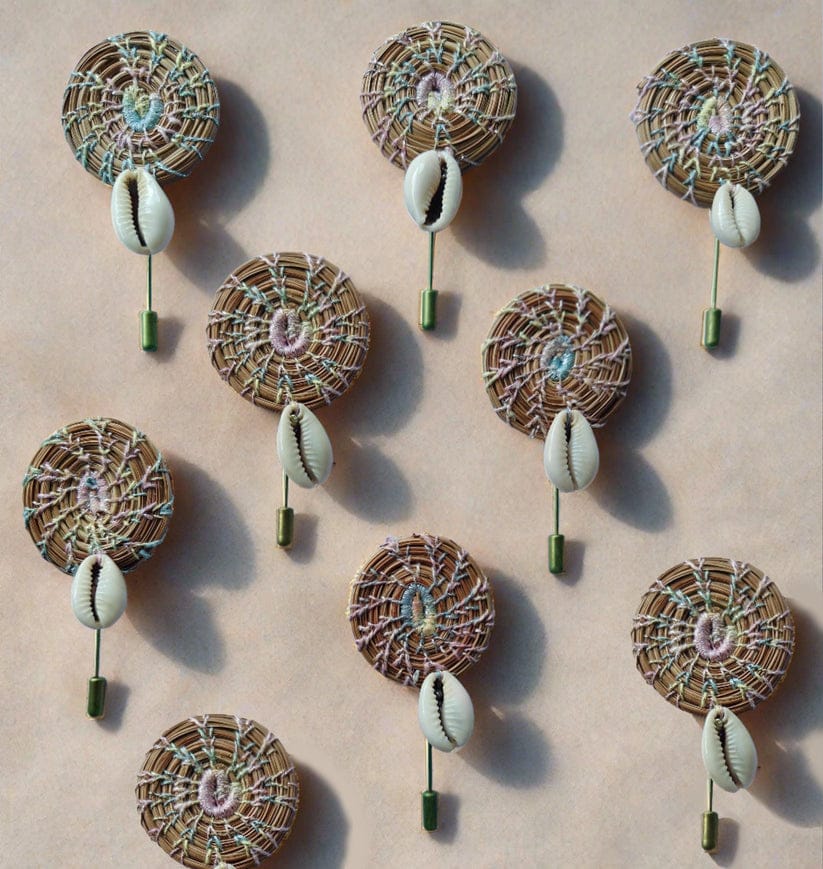
Decoding Sustainability
The delicate yet sturdy crafts produced by the hands of Anita are a testament to the skill, resilience, and creativity of the women from the hills of Uttarakhand. Working alongside nature, she gathers pine needles from the forest floor, transforming them into stunning products under the guidance of Nupur Poharkar. Uttarakhand’s landscape, dotted with pine trees, provides the perfect raw material for a community-driven initiative that empowers local women and promotes sustainability. Anita’s work is a reflection of the unique combination of traditional craftsmanship and modern innovation, resulting in products that carry the essence of both the forest and the skilled hands that craft them.
Q1. What inspired you to start working with Pirul?
I first heard about Pirul Handicrafts through women in Khetikhan who had already joined. When I saw how they were earning money and creating beautiful products, I knew I wanted to be a part of it. Nupur’s idea of turning pine needles into something valuable seemed like a great way to spend my time and contribute to my family’s income.
Q2. Was there any specific incident that motivated you to join Pirul?
I come from a village near Khetikhan, and when I saw the success other women were having with this initiative, I was inspired. The fact that they were earning income by using freely available resources, like pine needles, was the main motivation for me to get involved. It seemed like an opportunity I couldn’t pass up.
Q3. How popular are your products, and where do you sell them?
Our products are quite popular, both online and offline. We sell through local fairs, and it’s always a rewarding experience to see locals and visitors alike purchasing our handicrafts. We also have regular orders online, and our products are appreciated for their sustainability and craftsmanship.
Q4. What aspects of traditional techniques do you use in your craft?
I already knew some traditional techniques like knitting, painting, and quilling before joining Pirul. Nupur’s teachings allowed me to refine these skills and use them more effectively in creating our products. Combining these traditional techniques with new ones has been an exciting journey.
Q5. Who are your primary buyers?
Our buyers come from both online and offline markets. We create products based on the number of orders, and we also put up stalls at local fairs. Whether it’s locals or tourists, people appreciate the uniqueness and sustainability of our products.
Q6. Where did you get the idea to start a sustainable and eco-friendly business?
Nupur and women of surrounding villages inspired me to start this sustainable and eco-friendly business.
Q7. Is the business profitable in current times?
Yes, the business has been profitable for me. I didn’t have a consistent source of income before joining Pirul, but after three years, I can say that it has allowed me to manage my expenses and provide for my family. This is why I continue to work with Pirul.
Q8. Can you describe the creative process?
The process starts with collecting pine needles from the forest, which are then washed and dried. Once ready, we create a variety of products like baskets, coasters, pen stands, and earrings. We use traditional techniques such as quilling and knitting, combined with what Nupur has taught us, to create unique, eco-friendly products.
Q9. What challenges have you faced, and how did you overcome them?
One of the biggest challenges was the initial hesitation to go into the forest and collect pine needles. People in the village thought we were collecting waste, but once we started producing beautiful, sellable products, their attitudes changed. Another challenge is the seasonal availability of pine needles. We can only collect them during certain months and need to store them for the rest of the year.
Q10. What misconceptions do people have about your products?
There’s a common misconception that pine needles can’t be used to make sturdy products. People doubted the durability of our crafts, but once they started using them, they realized how strong and long-lasting they are. This has helped change their views.
Q11. Have you had any memorable customer experiences?
I remember setting up a stall at a local fair, and many people were surprised that something as simple as pine needles could be turned into such beautiful handicrafts. They were amazed at the transformation, and one customer even referred to pine needles as the “gold of Uttarakhand,” which made me feel proud of our work.